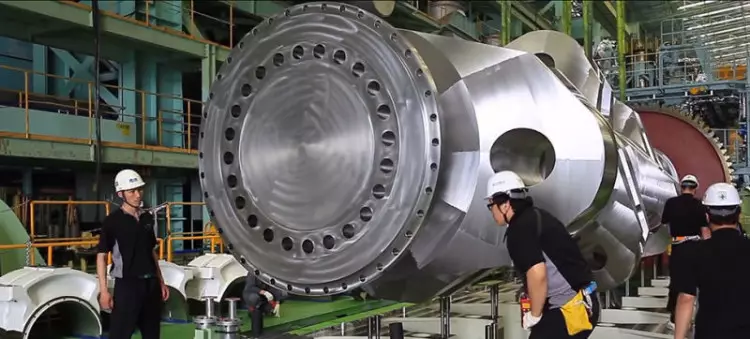The Wärtsilä-Sulzer 14RT-flex96C is the largest diesel engine in the world. It is surprising in terms of dimensions, consumption and power. Because we are lovers of technique, it's worth getting to know him better.
The featured image has been circulating on social media for a long time, and it probably wasn't the first time they've seen it: a giant engine being transported by a small truck – yes small, compared to that engine everything is small.
“consumption amounts to a nice 14,000 liters/hour at 120 rpm – which is, by the way, the maximum rotation regime”
It is the Wärtsilä-Sulzer 14RT-flex96C, the largest diesel engine in the world, both in size and volumetric capacity. A colossus of strength manufactured in Japan, by Diesel United, with technology from the Finnish company Wärtsilä. It's worth getting to know him better, don't you think?

This monster is part of the RT-flex96C modular engine family. Engines that can assume configurations between six and 14 cylinders – the number 14 at the beginning of the name (14RT) indicates the number of cylinders. These engines are used in the marine industry to power the largest ships in the world.
One of these engines currently equips the Emma Mærsk container ship – one of the largest vessels in the world, measuring 397 meters long and weighing over 170 thousand tons.
NOT TO BE MISSED: The 10 fastest cars in the world currently on sale
Returning to the Wärtsilä-Sulzer 14RT-flex96C, it is a diesel engine with a two-stroke cycle. Its power is an impressive 108,878 hp of power and consumption is figured in a nice 14,000 liters/hour at 120 rpm – which is, by the way, the maximum rotation regime.Speaking of dimensions, this engine is 13.52m high, 26.53m long and weighs 2,300 tonnes – the crankshaft alone weighs 300 tonnes (in the image above). Building an engine of this size is itself a remarkable engineering effect:
Despite the dimensions, one of the concerns of the engineering team of the Wärtsilä-Sulzer 14RT-flex96C was engine efficiency and emission control. The power generated by the engine is used not only to move the propellers, but also to generate electrical energy (delivered to auxiliary engines) and also used to power the remaining components of the ship. The steam generated by the refrigeration of the combustion chambers is also used, serving to generate electrical energy.
TO REMEMBER: All Time Stars: Mercedes-Benz returns to selling classic models
There are currently over 300 specimens of the Wärtsilä-Sulzer 14RT-flex96C sailing around the world. Finally, keep a video of the famous Emma Mærsk in motion, thanks to this marvel of technique:
https://www.youtube.com/watch?v=rG_4py-t4Zw
